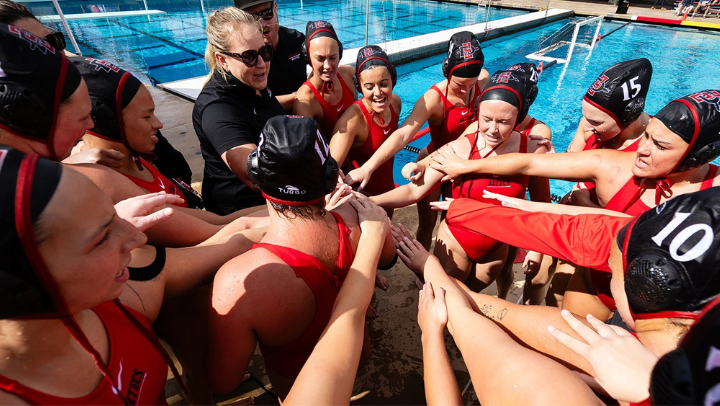Off the Beaten Course: EUROP 440
This class explores the complexities of human trafficking in Europe.

Off the Beaten Course is a series that delves into SDSU's course catalog to share unique and non-traditional classes.
Course title: EUROP 440: Human Trafficking in Europe
Professor’s name: Emily Schuckman Matthews
Schuckman Matthews is the faculty advisor for the San Diego State University's Euro Club.
1) What inspired you to create this course?
My interest in trafficking stems from time I spent in Russia as a Peace Corps volunteer where I witnessed firsthand the impact of trafficking on communities and gained a good understanding of the push and pull factors at play in trafficking. I wrote my master’s thesis on the subject and continued my research on the subject during my doctoral studies.
Creating the course was a natural extension of my own academic interests, and allows our department to engage students with critical and current human rights issues in Europe. The course explores the subject in the context of Europe, but also asks students to think about the dynamics of migration on our own borders.
2) What can students expect to learn from this course?
Students will come away from the course with a comprehensive understanding of the problem of human trafficking in its many complexities. Through readings, group projects, films and other course materials, students develop an understanding of the cultural, economic, social, geographic and political dynamics that fuel the trafficking industry.
3) What makes this course different from similar courses?
This course offers an important humanities-based, interdisciplinary exploration of trafficking which allows students to understand the issue in a complex and comprehensive way. Students are challenged to confront many assumptions they hold about European culture, values, gender, identity and migration.
4) Is there one day on the syllabus for this course you most look forward to? If yes, why?
One activity that I think is particularly interesting for students is a multi-day assignment that engages students critically with the images and visual discourse associated with anti-trafficking organizations. The primary goal of the assignment is to challenge students to examine, assess and contextualize images used in anti-trafficking materials, public service campaigns and the media.
This assignment exposes students to the concepts of discourse in our lives, the sometimes contradictory nature of image vs. message in anti-trafficking campaigns, and the ways women are represented as victims in anti-trafficking materials and the media more broadly. Students are also exposed to primary source materials which are relevant, current and real.
5) What’s your favorite thing about teaching this course?
Because the issue of human trafficking is constantly evolving, the course content is always shifting and changing, which challenges me to constantly update materials and topics. I also really enjoy the complex and thought-provoking conversations we have in class about global inequality, the discourses associated with trafficking and the ways in which we as students and academics can continue our engagement with this issue outside of the classroom.



